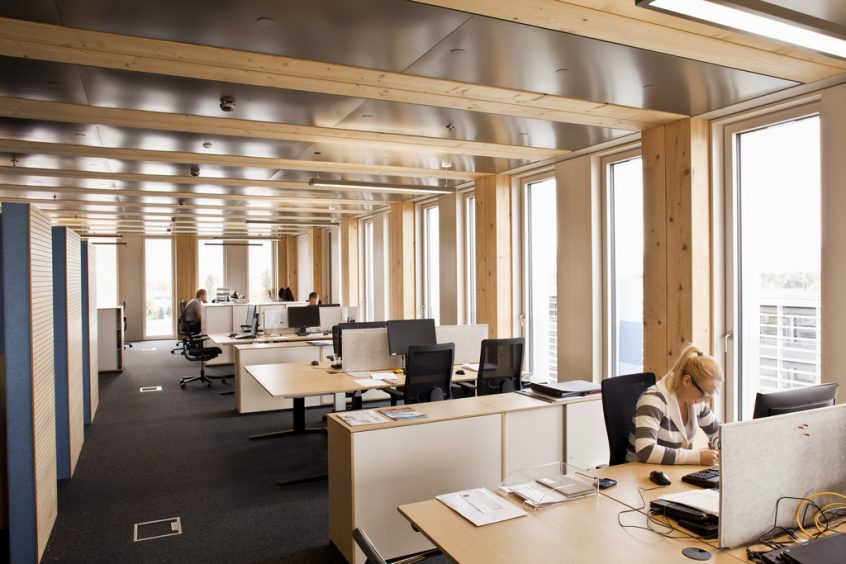A story in the Seattle Times this week explores the benefits of cross-laminated timber (CLT) as a renewable and affordable building material, and how CLT is starting to take off in the Northwest.
CLT is a contrast to traditional building materials like steel, concrete and plastic, which are major contributors to toxic greenhouse gases.
“There’s a need to reinvent construction so that we can meet the growing worldwide housing needs and minimize the effects of the construction industry on the environment,” says Mark Doumit, Executive Director of the Washington Forest Protection Association. “Building with timber from sustainably grown forests can actually help to solve both of these global problems.”
National and local building codes still need to catch up to CLT’s potential in the construction of tall buildings, but the future is bright.
U.S. building ordinances are lagging behind the technology available, but that’s changing. There are several CLT building projects in the Pacific Northwest. As that number grows, there is enormous promise in CLT for the Northwest timber industry.
Wood researchers at Oregon State University, funded by a $500,000 federal grant, are testing CLT to ensure it meets state building codes. Thomas Maness, dean of OSU college of forestry, estimates that changing the state building code requirements for wood buildings is likely three to six years away.
Meanwhile, individual building plans must include reports on how cross-laminated building components perform – and, they are passing with flying colors, getting approval on construction permits. In fact, Oregon is becoming a showcase for buildings that use CLT to replace steel and concrete in construction.
Just last April an eight-story condo tower made with CLT instead of steel beams was completed in North Portland, becoming the nation’s tallest wood building. An 11-story wood high-rise in the Pearl District was granted a construction permit in mid-June, vying for the crown. Buildings made out of cross-laminated timber are slated to go up soon at the Oregon State University campus in Corvallis. Springfield Mayor Christine Lundberg has said she would like to see the material used to build a parking garage in Glenwood.
Here in Washington, a state-funded pilot project is building three schools in Western Washington out of CLT for about $1 million each. Mount Vernon’s CLT school was completed last May, and both Maple Valley and Sequim are in the process of building modular schools that will be open in fall. One advantage is that since the panels are prefabricated, the exterior walls of a four-classroom school can be erected in one day.
Joe Mayo, architect at Mahlum in Seattle, reports that studies have shown that wood has a therapeutic effect on learning, reducing stress and calming because of its warmth and relaxing effect.
Washington’s working forests are among the world’s healthiest and managed sustainably. This means we can count on the environmental, economic and even the health benefits of wood construction, taking advantage of wood’s natural role as an absorber of carbon from the atmosphere after which the carbon is stored in solid lumber.
